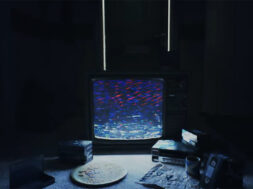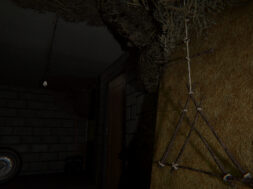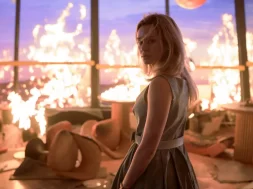“Based on the Hit Film” is a series of articles looking at the video game spin-offs and adaptations of popular horror and movies
For much of the first decade of this century, mainstream American horror movies were fairly high in profit, but lacking in originality. Zombie films began shuffling close to the height of popularity and remakes of classic horror were very much the in thing, with some proving successful (Dawn of the Dead, Texas Chainsaw Massacre) and others far less so (My Bloody Valentine).
Such was the craving for something new and exciting that when James Wan’s Saw arrived on the scene, it sparked a flurry of copycats and perhaps too many sequels in a short space of time.
Saw brought something to invigorate the rather listless horror genre. A blood-soaked murder mystery thriller with the twist that the killer tests his victims will to live with some rather brutal and grisly traps. Escape and you’ve been done a favor, meet your demise and you’re just proving you didn’t care that much about living anyway. At least this is how Jigsaw, the series’ iconic killer, sees it.
Who Want’s to Play a Game?

Meanwhile, a couple of years later in video game land, horror was looking for a fresh shot in the arm. At this time Saw had become a juggernaut horror franchise, and the timing could surely never be better for a Saw video game?
Brash Entertainment certainly believed this to be the case, and just before Saw III was set to hit cinemas in October 2006, it announced a deal with Twisted Pictures to create a Saw video game, which would be set to arrive alongside Saw IV the following October.
The idea was that it would be a version of the story from the first film, so as to start a game series that may be as lucrative as its filmic parentage. For various reasons, this would not happen as planned.
After the initial announcement, Brash would go dark on fresh info on the project. The promised tie-in date with Saw IV came and went, and it would be January of 2008 before the game reemerged with Saw’s Billy the Puppet appearing in a teaser. The game, now with a new story within the film universe, was set to appear on PC, PlayStation 3 and Xbox 360 as well as PlayStation 2. Brash hyped up the involvement of James Wan and Leigh Whannell, who were to design new traps just for the game.
It all seemed rather positive after such a worrying period of silence, but Brash may well have been full of hot air because not all that long after, Brash Entertainment handed development over to Zombie Studios (who, despite the name, were most famous for making tactical military shooters). Brash Entertainment opted to publish instead. Unfortunately for Brash, and the game itself, things weren’t going to get better.
It was November 14, 2008, and over two years after target release for the Saw video game, Brash Entertainment was shutting down due to financial difficulties, leaving Lionsgate, Zombie Studios and the Saw game stuck, unsure how to proceed.
A Second Chance at Life

Then came a savior of sorts. Japanese giant Konami took up an interest in the game, seeing it as a possible spiritual successor for its fading Silent Hill series. It agreed to publish and set about having the game redesigned to fit its plans.
While much of the core game Zombie Studios and Brash Entertainment had started with was intact, Konami still had a big say in the overall direction and tone of the finished product. Perhaps that was a case of too many cooks, or maybe the game was saved from being a complete disaster, but it is fair to say the troubled development showed in the final version of the game.
October 22, 2009, three whole years after it was due to arrive, the Saw video game finally landed. It was an ugly, confused creature that occasionally dared to do something interesting.
The plot of the game takes place after the events of the first film and sees The Jigsaw Killer (voiced by actual Jigsaw, Tobin Bell) healing Detective David Tapp (not voiced by Danny Glover) from his gunshot wound, before placing him in an abandoned insane asylum to teach him one of his famous life lessons. Jigsaw then goads Tapp into escaping and chasing him as he sits, bound to a chair, wearing the infamous snapping face mask trap seen in the film.
The infatuated Tapp does escape this trap (thanks to a series of waggles of the analog stick by the player) and goes through the asylum in a bid to catch Jigsaw, but faces plenty of cruel morality tales along the way. Tapp encounters several people who are in some way connected to him, and he must save them from Jigsaw’s sick puzzles. If that were not bad enough, Jigsaw has other captives held here whose sole task is to kill Tapp if they want to live.

Tapp faces plenty of grueling feats and learns more and more about Jigsaw’s origins as he progresses. It’s almost certainly unintentional, but there’s a clever metagame going on in Jigsaw directing Tapp through what is essentially a game, as the player does the same. At best it evokes the spirit of Manhunt and its dynamic between the tortured James Earl Cash and the gleeful, grisly prodding of the director, Starkweather, even if it doesn’t quite match it.
You spend time mostly solving Jigsaw’s grim puzzles, sometimes accompanied by an A.I. partner with their own life on the line, sometimes involving the destruction of others to progress. Saw: The Game is at its best when puzzles are involved, and frankly, that’s not saying a lot.
Its combat crops up a touch too often and is unwelcome due to how unwieldy and unresponsive it is. It has a decent weapon variety, sure, but it feels neither satisfying to execute nor impactful enough for how violent it is. It doesn’t really sell the danger of the situation when bludgeoning a frightened, yet vicious captive looks and feels more like you’re slapping a sandbag with a pillow.
Puzzles build the tension far better, and some traps that involve the lives of others will give you a short glimpse of what the victim’s grisly fate will be should you fail. Like the combat, it lacks the breathless, violent urgency necessary to replicate what makes Saw’s trap set pieces work, but it comes a lot closer. It doesn’t help that the moral trickery employed by Jigsaw in the films is not properly represented here. Saw: The Game often ends up with gore and distress for the sake of a cheap thrill, rather than tie it into Jigsaw’s ethos of testing people’s desire to live.
Live or Die, Make Your Choice

Despite best intentions, the jumbled project that is Saw: The Game inevitably suffers for its stop-start development under multiple developers and publishers. Critics were suitably lukewarm on the end product in 2009, citing the wonky combat and haphazard application of the film’s bloodthirsty morality tales. Despite that, there were things to like for fans of Saw.
These interesting things to come out of it were some of the Wan and Whannell trap design, Tobin Bell’s voice work, and the bleak ending to the game that ends with Tapp either committing suicide after escaping the asylum but not capturing Jigsaw or with Tapp inadvertently killing the wife of his late partner, Steven Sing, in an eerie echo of his demise in the first Saw film.
This ending sees Tapp driven mad, spending the rest of his days in an actual asylum where he still believes he’s playing Jigsaw’s game. The first ending is canonical, as the game’s sequel, Saw II: Flesh and Blood, confirms it, and the film, Saw V, features Tapp in an obituary.
Any hope that a sequel with fewer background problems would fare better were demolished pretty swiftly, as Saw II: Flesh and Blood was a massive step back from an already underwhelming game. It released one year after the first game though, coinciding with the release of the seventh film, so the alarmingly quick turnaround was likely a big factor in that game’s shortcomings.

Konami abandoned the Saw project after this, and as we now know, gradually shied away from horror games altogether. As for the developer, Zombie Studios, they were an early victim of the current console generation after flopping hard with another whiffy horror title Daylight, in 2014. Zombie Studios reanimated no more in 2015 following the retirement of its owners.
The Saw movie series also briefly died after an oversaturation of sequels, but it returned in 2017 to moderate success. With a much-changed gaming landscape, perhaps there’s one more shot at getting a Saw video game right in the near future.










